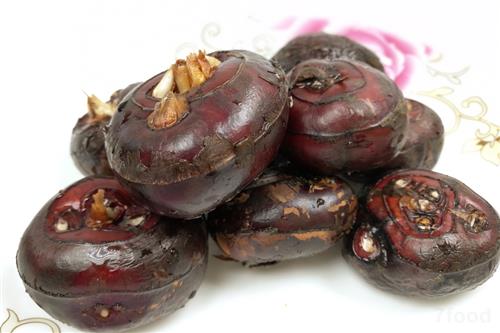Speaking of embarrassment, some people may not know what it is, but if they say horseshoe, they should be familiar with it. They are the same thing. Cantonese people often use it to make desserts, such as brown sugar horseshoe, horseshoe cake, red date horseshoe soup, etc. . Horseshoe is a aquatic plant, which is mainly produced in Fujian and Guangdong. It can be used as a vegetable to fry, stew, boil, and eat directly as a fruit. The taste is crisp and the meat is sweet and juicy. Food taboos 1, horseshoe should not be eaten raw Horseshoe is a aquatic plant. The skin and flesh may attach more bacteria and parasites. Raw food is easy to infect ginger patch disease. It is recommended to wash and cook thoroughly. 2, spleen and stomach Deficiency should not be excessive consumption Horseshoe cold, spleen and stomach Deficiency, frequent diarrhea, bloody people should not eat. 3, can not eat with skin Horseshoe must be peeled before eating, because the horseshoe grows in the underwater soil, and the epidermis collects many harmful substances and parasites. 4, should not eat too much Horseshoe cold and sweet, there is the role of bowel movement, eat too much easily bloating or diarrhea. Elderly people, those with poor digestion and digestive function should not eat too much. How do you save it? 1, pottery storage preservation. After harvesting, remove the dirt and debris from the bulb surface, remove the disease, damage the bulbs, and spread it on the tile floor for 12-15 days. After properly drying, place the pot in an indoor pottery jar with a storage volume of about 80-. 100 kilograms will be stamped with the mouth of the pottery vessel after the storage. The peasants' friends were reminded that the oysters stored in the pots had a strong role in the early stage of storage, and they had to be opened to facilitate ventilation and release the water in the cylinders; in the cold winter, the cylinders had to be covered. A layer of straw is warm to prevent freezing and rot; in the rainy season, due to high humidity in the air, the moisture content of the body will increase rapidly, and the moisture should be removed in a timely manner; during the hot and humid season, the moisture evaporates quickly and should be promptly stamped. , to prevent dry bulbar stem body rot caused by water evaporation. In the course of storage, the larvae stored in the terra cotta must be checked once every 25-30 days and stored according to the above method. The larvae's shelf life can reach more than half a year. 2, fine sand storage preservation. After harvesting, in a shady house or basement, bricks are used to build a burying pit. At the bottom of the pit, 5-7 cm thick sand is laid first, and the corms are arranged on the sand. The sand must be covered with 3 to 4 cm. , On the sand and then according to the above method to discharge the corm tubers, so stacked, stacking no more than 1 meter, can also play a good storage and preservation effect. 3, solution storage preservation. The collected stem bulbs were cleaned and immersed in sodium hypochlorite solution for storage. According to the test, using this method, when the temperature is in the range of 0-2 degrees and the relative humidity is 98-100%, the fresh-keeping period of the cockroach can reach 10 months, and the storage period under 5 degrees can reach 6-8 months. . Unwrinkled Smooth Film Dressing Frame,I.V. Transparent Dressing,Record Label Transparent Film Dressing,Breathable Waterproof Transparent Dressing Zhende Medical Co.,Ltd , https://www.zhendemedicals.com
Several methods of preservation of earthworms
Next Article
What is good for menstruation?